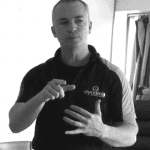Why your team need training about Safe Holding in Care Homes
The following is an actual story and scenario which was reported to our training team in the sessions that we deliver for staff who look after older people in care. I believe that stories like this are generally representative of the kinds of conflict and violent incidents which occur with largely un-recognised frequency in care homes for older people.
A 90+ year-old resident became very agitated during a night-shift. The trigger for this resident was that he wanted a male carer to help him with personal care. The female carer in his unit attempted to de-escalate and calm him using all the methods at her disposal but he escalated to the point of violence. The resident began pulling electrical appliances (e.g. a microwave) from the wall and throwing them around the unit. He was extremely upset and very violent at this point. The carer, assessing that the risk from the resident was too great for her to deal with, left the unit and proceeded to a place of safety behind a closed door. She kept the resident in view but observed him entering other residents rooms as the incident was ongoing. She and the other staff called the police. The police eventually arrived and entered the unit and began a de-escalation process which ended when a doctor was able to administer medication to assist the man to calm down. A police officer mentioned to a carer that they could not believe that one person could have caused so much damage to the unit – “like a tsunami”.
KEY ISSUES:
1) Staffing and Resourcing there Care Plan: if this resident is known to need or want a male carer to assist him in important tasks, then we have to ask why this was not provided and whether there is adequate justification for the fact that a male carer was not available to him. If Person Centred-Care is our aim in these services, then we need to be able to resource that aim properly to avoid escalating incidents like this one.
2) This is a great example of good decision-making from the member of staff, in that she took “reasonable care” for herself by assessing the level of danger to herself and – on assessing that it exceeded here personal capacity and that of her team – decided to withdraw and “contain rather than restrain. Good decisions like these are hard to take, but ultimately very important for the staff to feel enabled and empowered to make.
3) This was a Near-Miss: what if the resident had decided, in his fit of rage, to damage not just property and furniture, but to assault the other residents, who were asleep in their beds at the time of the incident? The staff had withdrawn from the unit and therefore left the resident there with the other residents. As we know, it is not unknown for residents to be assaulted and seriously hurt or killed by other residents in care homes. Near Miss
4) Training Needs Analysis: what level of conflict resolution and physical intervention skills should care assistants be trained to?…which relates to the use of police in these kinds of incidents:
5) Will the police continue to respond? There is a growing debate about the true role of police in the control of incidents which happen within functioning businesses and government local-authority facilities. [ Article 1 ] [ Article 2 ]
Training your staff in Safe Holding in Care Homes, such as we provide, can help you to have a preplaned practiced response in mind when a crisis like this happens. Like the woman above, your team need to be able to understand the best possible decisions they can make to bring safety to a chaotic situation.
Gerard O’Dea is a conflict management, personal safety and Safe Holding in Care Homes training consultant. He is the training director for Dynamis, a specialist provider of personal safety and violence management programmes and the European Adviser for ‘Verbal Defense and Influence’, a global programme which addresses the spectrum of human conflict. www.dynamis.training



